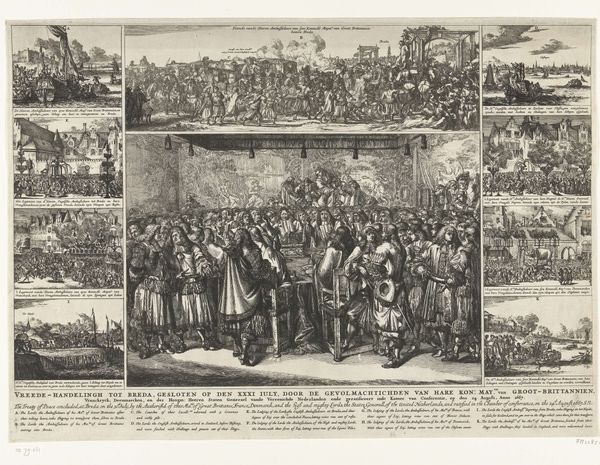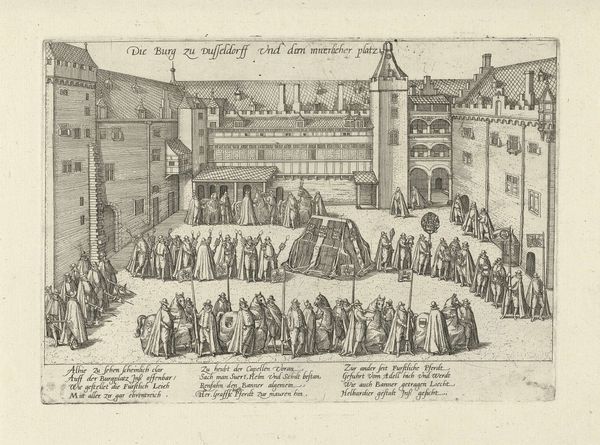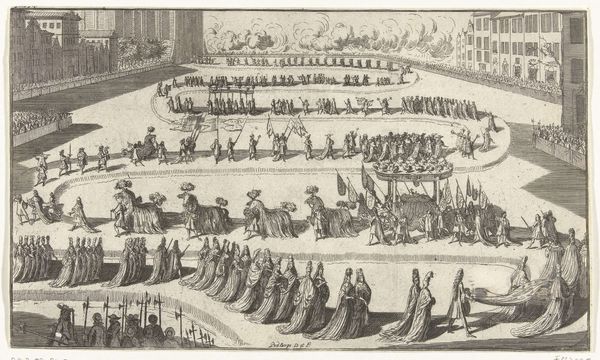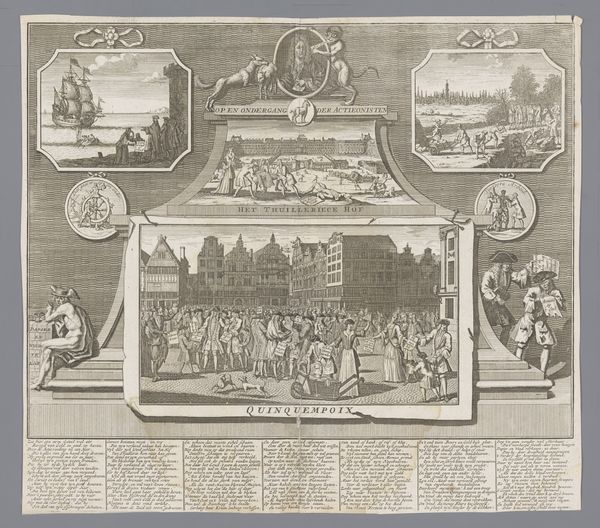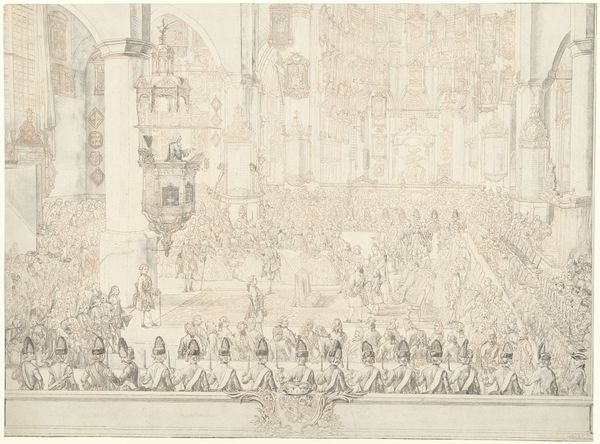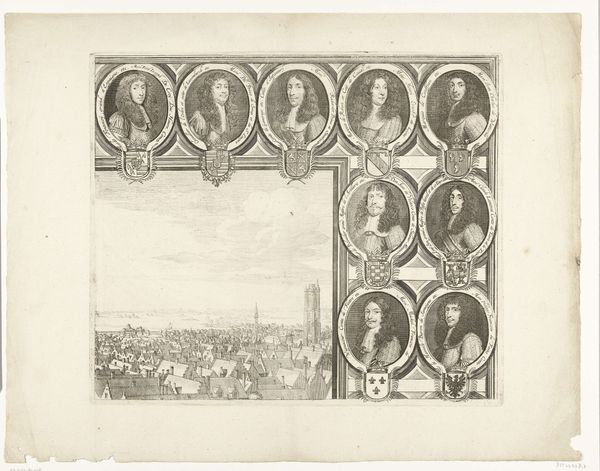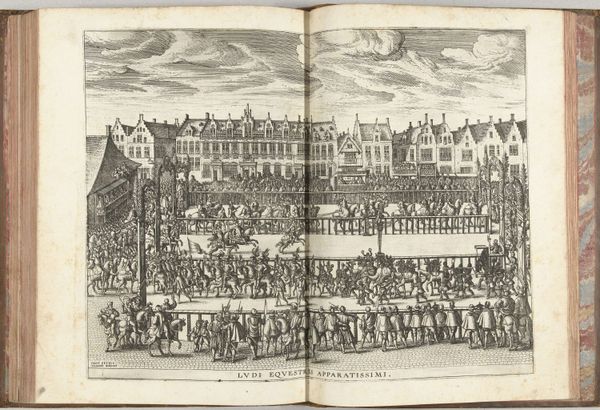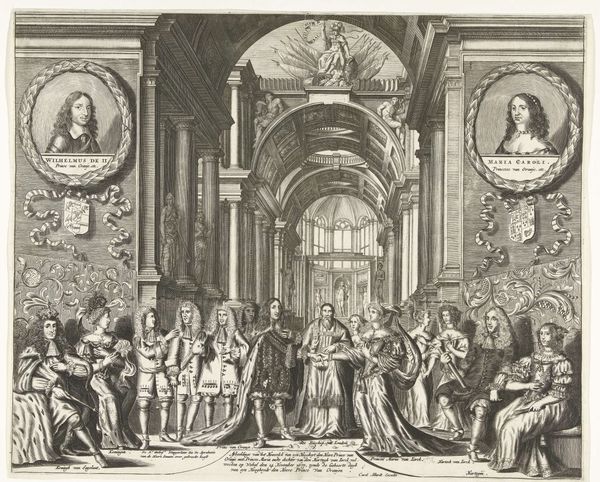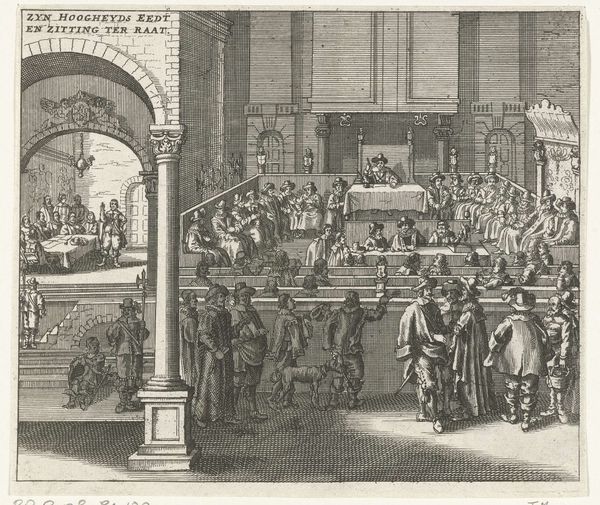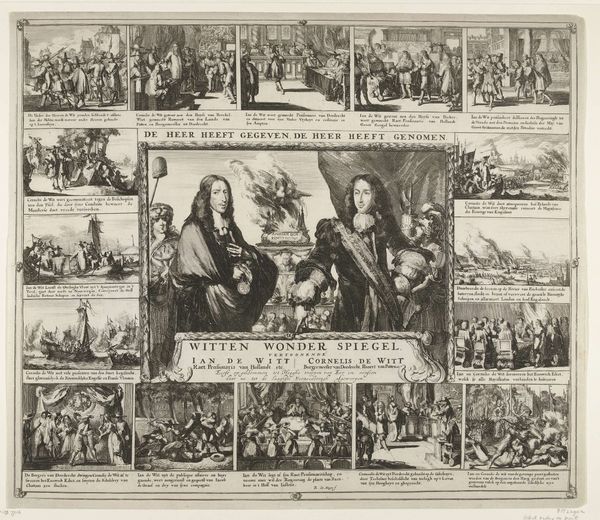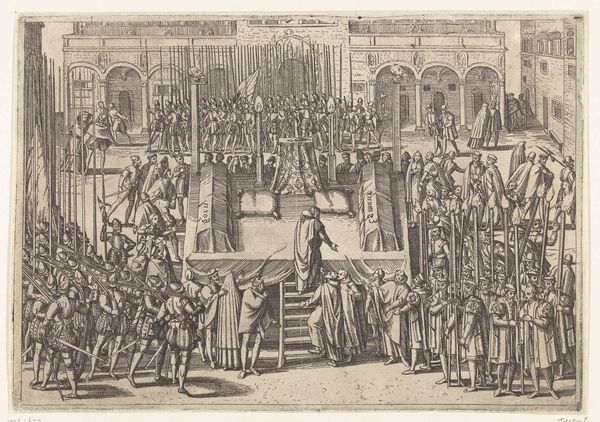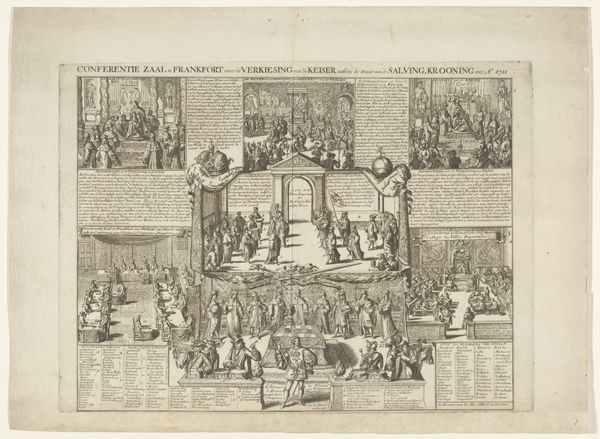
Proclamatie te Gent van Karel II van Spanje als graaf van Vlaanderen (blad 6), 1666 1666 - 1667
0:00
0:00
print, engraving
#
baroque
# print
#
cityscape
#
history-painting
#
engraving
Dimensions: height 353 mm, width 422 mm
Copyright: Rijks Museum: Open Domain
Curator: This print, dating back to 1666-1667, is entitled "Proclamatie te Gent van Karel II van Spanje als graaf van Vlaanderen (blad 6)", and it comes to us from the hand of Lucas (II) Vorsterman. Editor: What immediately strikes me is the palpable sense of civic participation depicted. Even in monochromatic engraving, one feels the texture of the event, and the stark formality contrasts sharply with the animated crowd. Curator: Indeed, these cityscapes embedded with portraiture served a crucial public function. These were often commissioned and displayed as records of significant political or social events. Here, Charles II of Spain’s proclamation as Count of Flanders is being commemorated and visualized as part of an assertion of power. The city of Gent is performing its role in the political theatre. Editor: I’m particularly interested in how this piece uses the visual language of power. Placing Charles II among other regal figures— presumably council members of significant import— emphasizes that his actions occurred within a landscape of established political governance and societal structure. Yet, one wonders, whose history is privileged by this image, and who is missing from this grand performance of power? Curator: Absolutely. Whose presence validates power, and conversely, whose absence allows that validation? Furthermore, what is the experience of that performance of power for those not explicitly depicted—or implicitly depicted as only part of the mass? How do people actively negotiate, receive, and interpret images such as this that directly concern them and define the terms of their civic belonging? Editor: It’s a potent reminder that even seemingly straightforward historical records such as this need critical reevaluation. By considering who benefits from an image, we can unearth larger, more intricate webs of societal power at play. It leaves you contemplating who’s really in charge and in control of the dominant narrative. Curator: Indeed, viewing the image as a historical artefact deeply embedded in social relations allows it to resonate powerfully today.
Comments
No comments
Be the first to comment and join the conversation on the ultimate creative platform.

